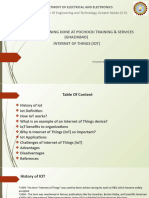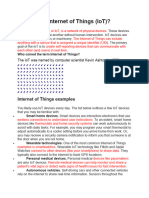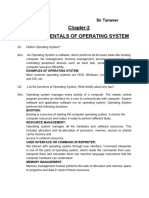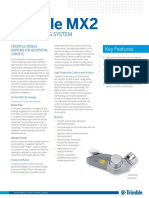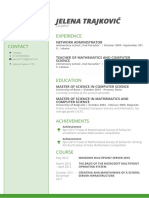Iot 1
Uploaded by
Sudip MoiIot 1
Uploaded by
Sudip Moi***
Table Of Content ***
Iot Definition
History of IoT
IoT Definition
“The Internet of Things (IoT) is a system of
How IoT works?
interrelated
What is an example of an Internet of Things device?
computing devices, mechanical and digital
IoT benefits to organizations
machines, objects,
Why Is Internet of Things (IoT) so important?
animals or people that are provided with
Iot Applications
unique identifiers and
Challenges of Internet of Things (IoT)
the ability to transfer data over a network
Advantages
without requiring
Disadvantages
human-to-human or human-to-computer
References
interaction.”
***How IoT works?
1) Sensors/Devices ***
What is an example of an Internet of Things
2) Connectivity device?
3) Data Processing
4)User Interface 1. A lightbulb that can be switched on using a
smartphone app is an IoT device, as is a motion
1) Sensors/Devices
sensor or a smart thermostat in your office or a
*Sensors or devices are a key connected streetlight.
component that helps you to collect live data from
2. An IoT device could be as fluffy as a child's toy
the surrounding environment.
or as serious as a driverless truck.
*All this data may have various levels of complexities.
* 3. Some larger objects may themselves be filled
It could be a simple temperature monitoring sensor with many smaller IoT components, such as a jet
,or it may be in the form of the videofeed. engine that's now filled with thousands of
sensors collecting and transmitting data back to
make sure it is operating efficiently.
2) Connectivity
*All the collected data is sent to a cloud infrastructure.
*The sensors should be connected to the cloud using ** IoT benefits to organizations
various mediums of communications. monitor their overall business processes;
improve the customer experience (CX);
*These communication mediums include mobile or
save time and money;
satellite networks, Bluetooth, WI-FI, WAN, etc.
enhance employee productivity;
3) Data Processing integrate and adapt business models;
make better business decisions; and
*Once that data is collected, and it gets to the cloud ,
generate more revenue.
*
the software performs processing on the gathered
data. ***
*This process can be just checking the temperature, Why Is Internet of Things (IoT) so important?
reading on devices like AC or heaters.
* Over the past few years, IoT has become
4) User Interface one of the most important technologies of the
* 21st century.
The information needs to be available to the end- * Now that we can connect everyday
user in some way which can be achieved by objects—kitchen appliances,
triggering alarms on their phones or sending them cars, thermostats, baby monitors—to the
notification through email or text message. internet via embedded devices, seamless
communication is possible between people,
*The user sometimes might need an interface which processes, and things.
actively checks their IoT system. * By means of low-cost computing, the cloud,
big data, analytics, and
*For example, the user has a camera installed in his mobile technologies, physical things can
home. He wants to access video recording and all share and collect data with minimal human
the feeds with the help of a webserver. intervention.
*** IoT Applications
Smart Thermostats
Connected Cars
Activity Trackers
Parking Sensors
Connect Health
Smart City
***
Challenges of Internet of Things (IoT)
Insufficient testing and updating
Concern regarding data security and privacy
Software complexity
Data volumes and interpretation
Integration with AI and automation
Devices require a constant power supply which
is difficult
Interaction and short-range communication
***
Advantages of IoT
Ability to access information from anywhere at any time
on any device;
Improved communication between connected
electronic devices;
Transferring data packets over a connected network
saving time and money;
and Automating
tasks helping to improve the quality of a business's
services andreducing the need for human intervention.
***Disadvantages IoT
As the number of connected devices increases and
more informationis shared between devices,
the potential that a hacker
could steal confidential information also increases.
Enterprises may eventually have to deal
with massive numbers --maybe even millions -- of
IoT devices, and collecting and managing
the data from all those devices will be challenging.
If there's a bug in the system, it's likely that every
connected devicewill become corrupted.
Since there's no international standard of compatibility
for IoT, it's difficult for devices from different
manufacturers to communicate with each other.


























